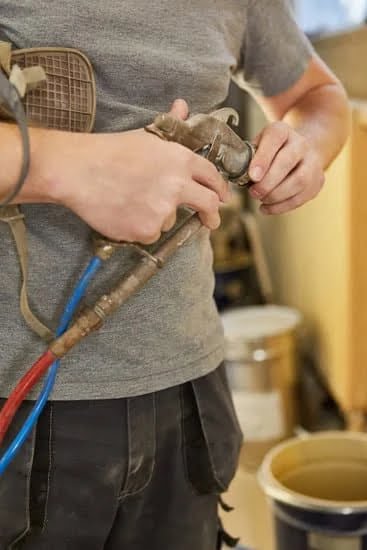Woodworking joints are an essential aspect of crafting high-quality, durable furniture and wood projects. Knowing how to draw woodworking joints is a crucial skill for any woodworker, as it allows for precise measurements and accurate assembly. In this article, we will explore the significance of woodworking joints and provide a detailed guide on how to draw them effectively.
Understanding the different types of woodworking joints is fundamental in achieving strong and stable constructions. From dovetail joints to mortise and tenon joints, each type serves a specific purpose and offers unique advantages in various woodworking projects. By mastering the art of drawing these joints, woodworkers can elevate the quality of their craftsmanship and create lasting pieces.
To begin your journey into drawing woodworking joints, it’s important to have the right tools and materials at your disposal. This includes rulers, pencils, protractors, marking gauges, and various types of wood. These tools are essential for accurately translating joint designs onto wood surfaces and ensuring precise measurements for seamless assembly.
Understanding Different Types of Woodworking Joints
Woodworking joints are a critical component of any woodworking project, as they provide the necessary strength and stability to ensure that the final piece is durable and well-constructed. One must understand the various types of woodworking joints before attempting to draw them in a project.
Some familiar types include dovetail joints, mortise and tenon joints, box joints, and more. Each type has its unique attributes and use cases, making it essential for woodworkers to have a good understanding of their properties.
Dovetail joints are known for their interlocking wedge-shaped fingers which make them extremely durable and suitable for drawer construction. On the other hand, mortise and tenon joints are incredibly versatile and commonly used in furniture making due to their strength. Additionally, box joints are often seen in joinery applications where strength is crucial as they utilize interlocking finger-like projections for added stability.
Various tools can be used to draw these different woodwork joins such as marking gauges or other precision measurement tools C-clamps to ensure correct angles and measurements.
Understanding how to draw woodworking joints will not only enhance the look of your finished piece but also increase its longevity. The key is selecting the right joint type that best serves your design intent while ensuring structural integrity throughout your work.
| Joint Type | Attributes |
|---|---|
| Dovetail Joints | Interlocking wedge-shaped fingers, known for durability |
| Mortise and Tenon Joints | Versatile and strong, suitable for furniture making |
| Box Joints | Utilizes interlocking finger-like projections for added stability |
Tools and Materials Needed
Woodworking joints are essential components of any wood project, as they provide the necessary structural support and stability for furniture and other wooden items. Drawing woodworking joints is a crucial step in the construction process, as it allows woodworkers to visualize and plan the intricate connections between different pieces of wood.
In order to draw woodworking joints accurately and precisely, it is important to have the right tools and materials at hand. Here is a detailed list of the essential tools and materials required for drawing woodworking joints.
Basic Tools
The basic tools needed for drawing woodworking joints include rulers, pencils, erasers, and protractors. These tools are essential for making precise measurements, marking out angles, and sketching out the details of each joint. A high-quality ruler with clear markings is necessary for accurate measurements, while a sharp pencil will ensure clean and visible lines on your drawings.
Measuring Instruments
In addition to basic tools, measuring instruments such as calipers and combination squares are also important for drawing woodworking joints. Calipers allow woodworkers to take precise measurements of the thickness and width of wood pieces, while combination squares can be used to mark straight lines and check for 90-degree angles.
Materials
When drawing woodworking joints, it’s important to have access to different types of wood that you’ll be using in your projects. This will allow you to create accurate drawings based on the actual dimensions of the wood you intend to use. Additionally, having scrap pieces of wood can be helpful for practicing joint drawings before working on your actual project.
By ensuring that you have the necessary tools and materials at hand, you can set yourself up for success in drawing woodworking joints accurately and efficiently. With these resources, you will be well-equipped to start visualizing and planning the intricate connections that will bring your woodworking projects to life.
Step-by-Step Guide on Drawing Woodworking Joints
Woodworking joints are an essential aspect of creating sturdy and long-lasting wood projects. They provide strength and stability to furniture and other wooden constructions, making them an integral part of woodworking. In this section, we will delve into a comprehensive tutorial on the step-by-step process of drawing woodworking joints, including measurements, angles, and precise markings.
Materials Needed
Before starting the process of drawing woodworking joints, it is crucial to gather all the necessary materials. This includes a ruler for accurate measurements, pencils for marking, protractors for measuring angles, and different types of wood to practice drawing various woodworking joints.
Drawing Process
The first step in drawing woodworking joints is to understand the specific joint you want to create. Whether it’s a dovetail joint, mortise and tenon joint, or box joint, each one has its own unique characteristics that require precise drawings. Begin by carefully measuring and marking the pieces of wood where the joint will be formed. Use a ruler and pencil to create straight lines and accurate dimensions according to your project’s requirements.
Precision Is Key
When drawing woodworking joints, precision is key to ensuring a perfect fit when constructing the actual joint. Use marking gauges to make precise markings on the wood and double-check all measurements and angles before proceeding. Taking your time in this stage will ultimately lead to a well-constructed woodworking joint that enhances the overall quality of your wood projects.
By following this step-by-step guide on drawing woodworking joints with precision and accuracy, you can ensure that your furniture and wooden constructions are not only visually appealing but also structurally sound. With practice and attention to detail, mastering the art of drawing woodworking joints will greatly enhance your skills as a woodworker.
Tips for Accuracy and Precision
Drawing woodworking joints requires precision and accuracy to ensure that the final product fits together seamlessly. One helpful technique for achieving this is by using marking gauges to make precise markings on the wood. These tools allow you to create consistent and accurate lines, which are crucial when creating woodworking joints.
In addition to using marking gauges, taking your time with measurements is essential in drawing woodworking joints. Rushing through measurements can lead to inaccurate cuts and misaligned joints, resulting in a poor-quality final product. By carefully measuring and marking each piece of wood before cutting, you can ensure that your woodworking joints fit together perfectly.
Another tip for accuracy and precision in drawing woodworking joints is to use the right tools for the job. For example, investing in high-quality rulers, protractors, and pencils can make a significant difference in the accuracy of your drawings. Using tools specifically designed for woodworking will help you achieve more precise results when drawing and creating woodworking joints.
Given the intricacy of some woodworking joint designs, it’s important to maintain a steady hand and a sharp eye throughout the drawing process. By following these tips and techniques, you can improve your skills in drawing woodworking joints and create high-quality projects with seamless joinery.
| Tips for Accuracy | Techniques |
|---|---|
| Use marking gauges | Create consistent lines |
| Take time with measurements | Avoid inaccurate cuts |
| Use high-quality tools | Specifically designed for woodworking |
Common Mistakes to Avoid
When it comes to drawing woodworking joints, beginners often make common mistakes that can affect the strength and durability of their projects. Avoiding these errors is crucial for ensuring the success of any woodworking endeavor. Here are some of the most common mistakes to avoid when drawing woodworking joints, along with tips on how to prevent them:
- Incorrect Measurements: One of the most prevalent errors is inaccurate measurements, which can lead to ill-fitting joints and compromised structural integrity. To avoid this, always double-check your measurements and use a high-quality ruler or tape measure.
- Poor Markings: Inadequate or unclear markings can result in misaligned joints and an overall sloppy finish. It’s essential to use sharp pencils and marking gauges for precise and clear markings on your wood pieces.
- Improper Angles: Failing to accurately measure and mark angles can result in poorly fitting joints that compromise the strength of the piece. Utilize protractors and angle guides to ensure correct angles for your woodworking joints.
By being mindful of these common mistakes and implementing proper techniques, beginners can improve the quality and accuracy of their woodworking joint drawings.
In addition to the above-mentioned precautions, it’s also important for beginners to take their time with each step of the drawing process. Rushing through measurements and markings can lead to a lack of precision and ultimately result in faulty joints. Patience is key when it comes to drawing woodworking joints.
Furthermore, seeking guidance from experienced woodworkers or online resources can provide valuable insight into best practices for drawing woodworking joints. Engaging in practice exercises using templates will also help beginners sharpen their skills and gain confidence in creating accurate woodworking joint drawings.
Ultimately, by learning from these common mistakes and consistently practicing good habits, beginners can improve their skills in drawing woodworking joints and achieve better results in their woodworking projects.
Practice Exercises
Now that you have learned about the different types of woodworking joints and the tools needed to draw them, it’s time to put your knowledge into practice. Practice exercises are a fantastic way to enhance your skills in drawing various woodworking joints. By practicing regularly, you can improve your accuracy, precision, and overall understanding of how to create strong and visually appealing joints for your woodworking projects.
To begin, start with simple exercises such as drawing basic butt joints, lap joints, or miter joints on paper. This will help you get comfortable with measuring and marking the wood accurately. As you gain confidence, you can move on to more complex joints like dovetail joints or mortise and tenon joints.
In addition to practicing individual woodworking joints, consider creating templates that you can use as references for future projects. These templates can serve as a guide for making consistent and precise cuts when working with actual wood. By repeatedly drawing and referencing these templates, you can develop muscle memory and improve your drawing skills over time.
Another helpful exercise is to take an existing woodworking joint design and try to replicate it on paper. This allows you to analyze the details of the joint structure and understand how each component fits together. Pay close attention to measurements, angles, and proportions as you recreate the joint, as these details are crucial for ensuring a proper fit when constructing the joint with actual wood.
By engaging in these practice exercises regularly, you can sharpen your skills in drawing woodworking joints and gain confidence in tackling more advanced projects in the future. Remember to be patient with yourself and embrace mistakes as learning opportunities. With dedication and practice, you’ll be well on your way to mastering the art of drawing woodworking joints confidently and accurately.
Resources for Further Learning
For individuals looking to further their understanding and skills in drawing woodworking joints, there are numerous resources available that provide valuable information and guidance. Books on woodworking joints offer detailed explanations, illustrations, and step-by-step instructions for creating various types of joints. “The Complete Manual of Woodworking” by Albert Jackson and David Day is a comprehensive guide that covers different types of woodworking joints and techniques, making it an essential resource for beginners and experienced woodworkers alike.
In addition to books, websites dedicated to woodworking provide a wealth of knowledge on different joint types, tools, and methods. Websites such as FineWoodworking.com and TheWoodWhisperer.com offer tutorials, articles, and forums where individuals can learn from experienced woodworkers and share their own experiences. These platforms also often feature videos that visually demonstrate the process of drawing woodworking joints, providing a helpful learning tool for those who prefer visual instruction.
Furthermore, YouTube has become a valuable resource for learning about woodworking techniques. Many woodworking experts create video tutorials on how to draw different types of joints with clear demonstrations and explanations. Channels such as WoodWorkWeb and Steve Ramsey’s Woodworking for Mere Mortals offer step-by-step tutorials on drawing woodworking joints using various tools and materials. Utilizing these digital resources allows individuals to expand their knowledge and skills from the comfort of their own workspace.
Conclusion
In conclusion, mastering the skill of drawing woodworking joints is essential for anyone involved in woodwork. From creating furniture to constructing wooden structures, understanding and accurately depicting different types of woodworking joints is crucial for achieving strong and durable pieces. By familiarizing yourself with various types of woodworking joints such as dovetail joints, mortise and tenon joints, and box joints, you can expand your capabilities as a woodworker.
Through this comprehensive guide, we have delved into the tools and materials needed for drawing woodworking joints, provided a step-by-step tutorial on the drawing process, offered tips for accuracy and precision, highlighted common mistakes to avoid, and presented practice exercises to help you hone your skills. By following these instructions and practicing consistently, you can sharpen your ability to visualize the intricacies of different woodworking joint designs.
Ultimately, by educating yourself on how to draw woodworking joints effectively, you are equipping yourself with a valuable skill that will enhance the quality of your woodwork projects. Whether you are a beginner or an experienced woodworker looking to improve your craft, take the time to practice drawing different woodworking joint styles using the techniques outlined in this guide.
As you continue to learn and grow in this area, don’t hesitate to seek out additional resources such as books, websites, and videos dedicated to woodworking joint drawings in order to further refine your skills. With dedication and perseverance, you can become adept at creating precise and detailed drawings of woodworking joints that will serve as the foundation for your future woodworking endeavors.
Frequently Asked Questions
How Do You Draw a Wooden Joint?
Drawing a wooden joint requires careful attention to detail and precise measurements. It typically involves sketching out the two pieces of wood that will be joined together, then showing how they fit together using traditional woodworking symbols.
The key is to accurately depict the shape and dimensions of the joint so that it can be easily understood by anyone looking at the drawing.
What Is the Easiest Wood Joint to Make?
The easiest wood joint to make is often considered to be the butt joint. This simple joint involves joining two pieces of wood by simply butting them together and fastening them with nails, screws, or glue.
While it may not be the strongest or most aesthetically pleasing joint, it is straightforward and does not require complex cutting or shaping of the wood.
What Is the Most Difficult Woodworking Joint?
The most difficult woodworking joint is often said to be the dovetail joint. This type of joint requires precision in both measuring and cutting, as well as a high level of skill to create tight-fitting interlocking sections.
Dovetail joints are commonly used in fine furniture and cabinet making due to their strength and resistance to being pulled apart, but they require a significant amount of practice and patience to master.

Hi everyone! I’m a woodworker and blogger, and this is my woodworking blog. In my blog, I share tips and tricks for woodworkers of all skill levels, as well as project ideas that you can try yourself.





